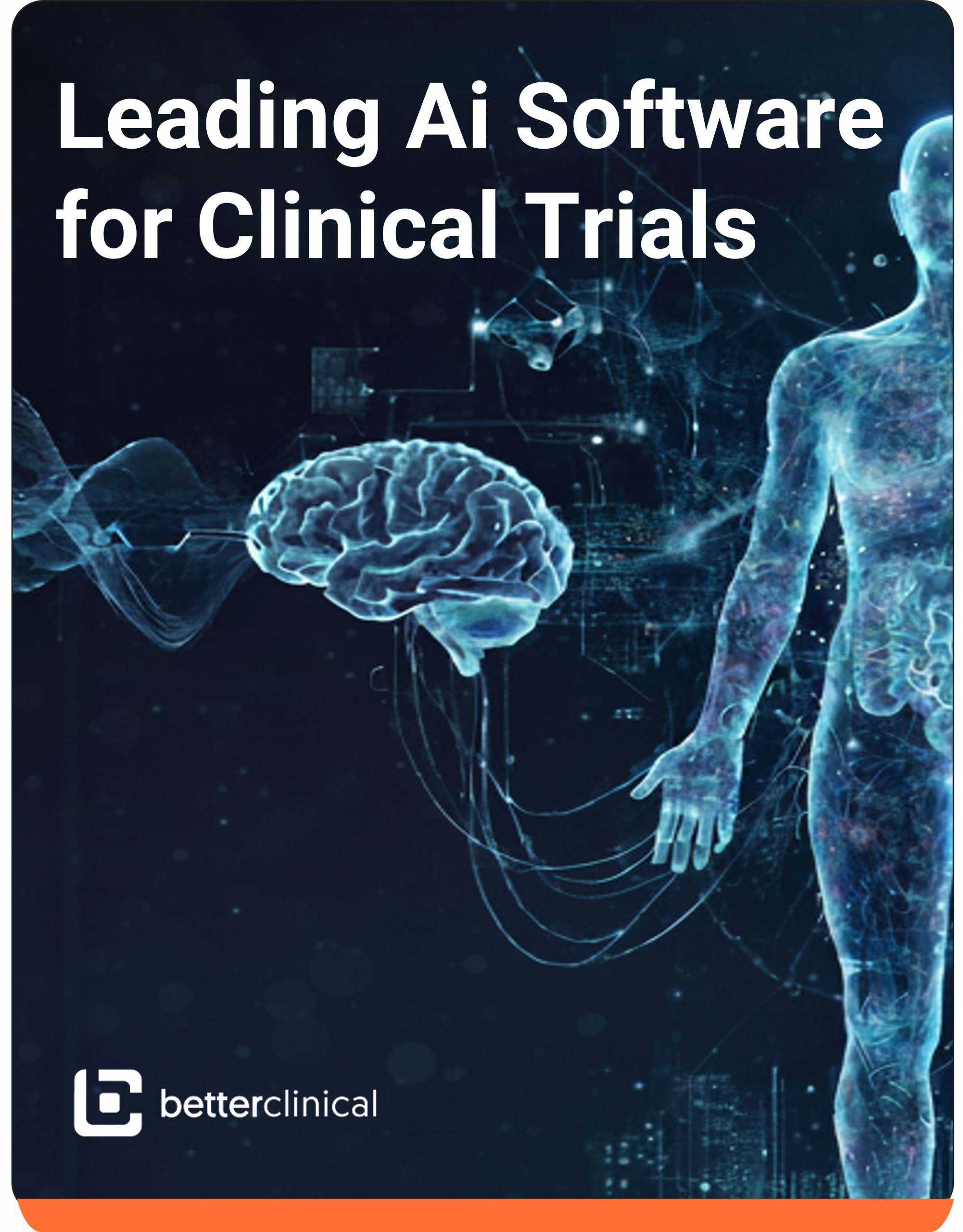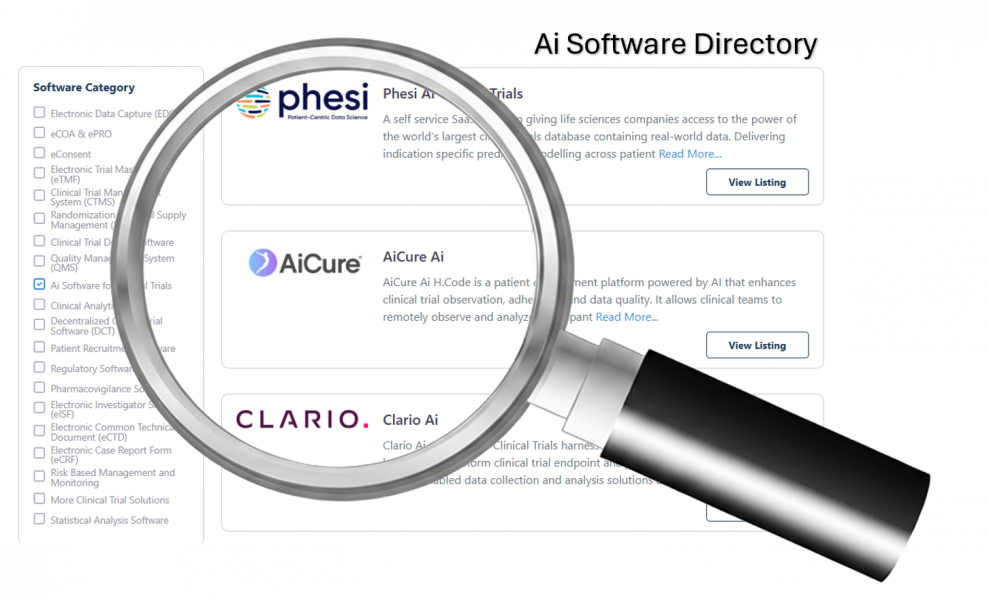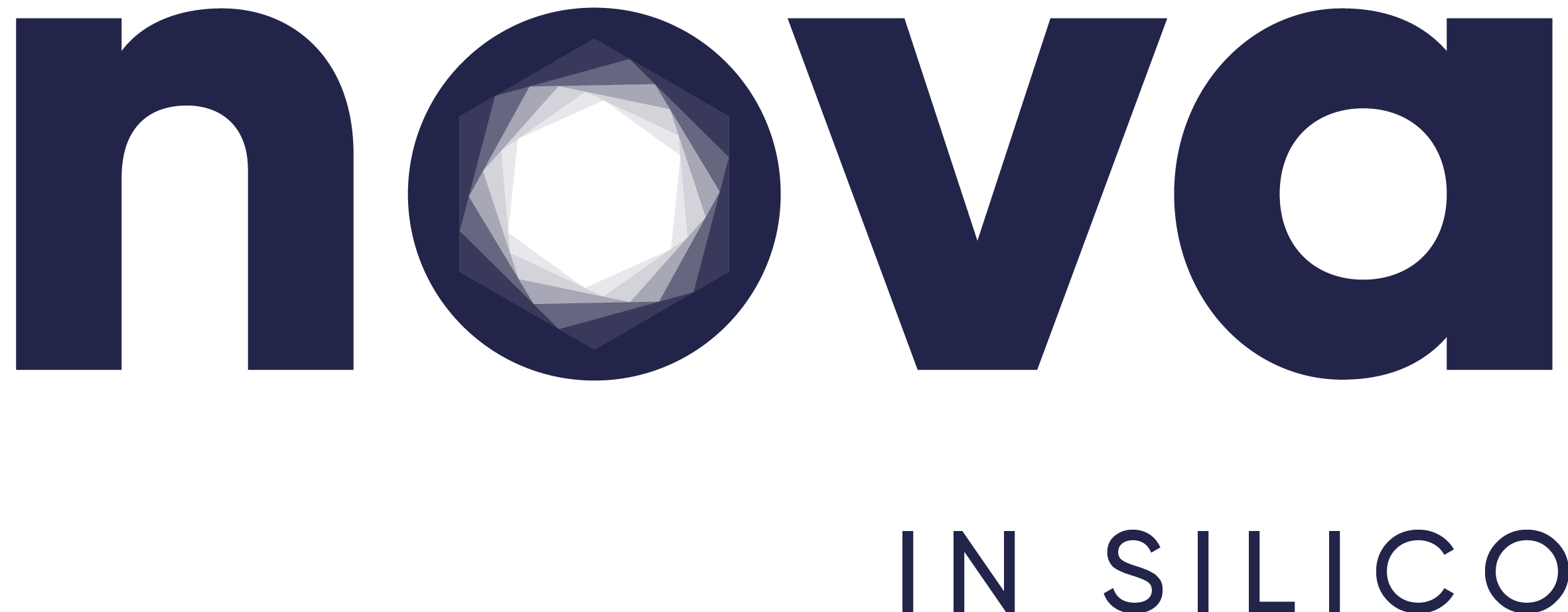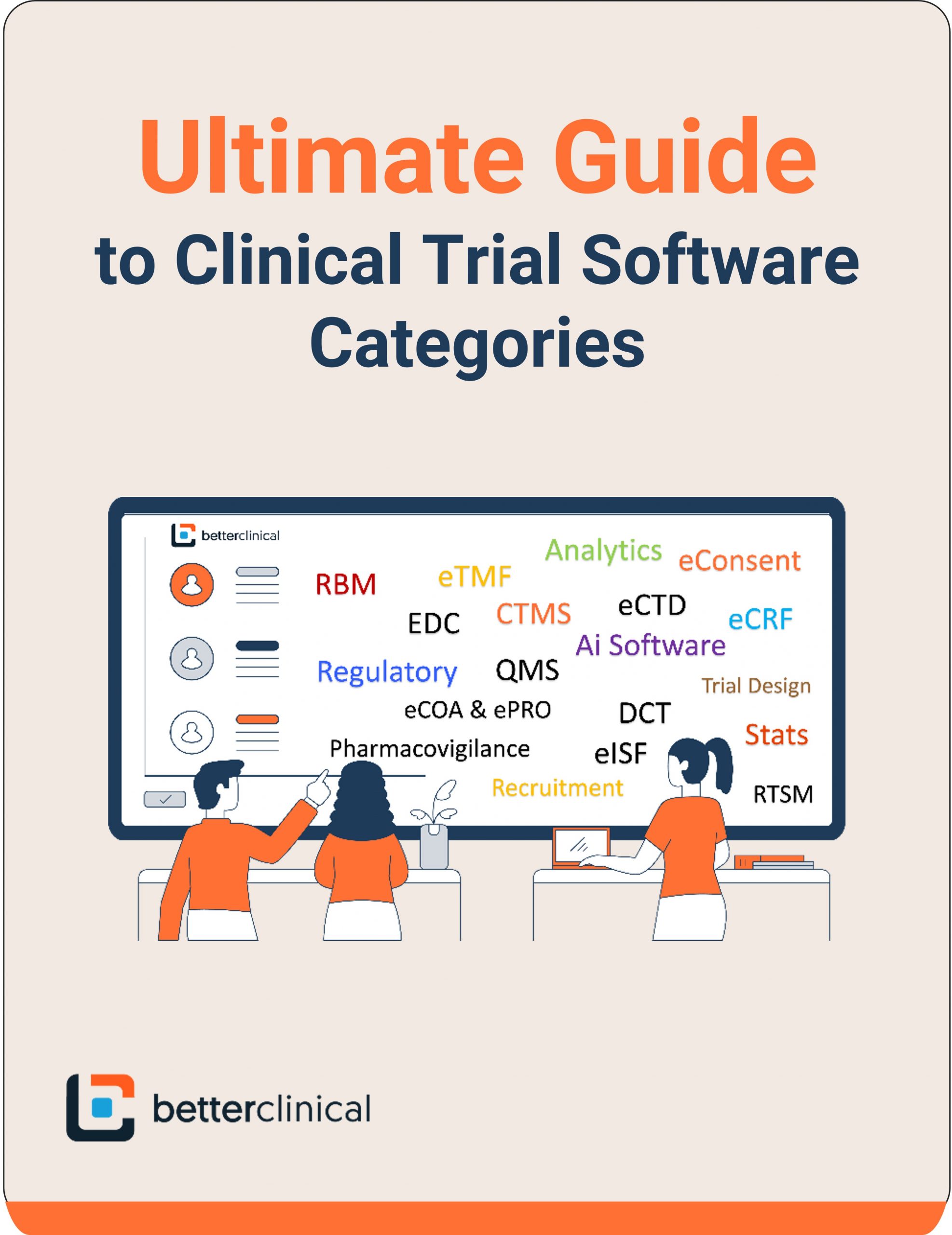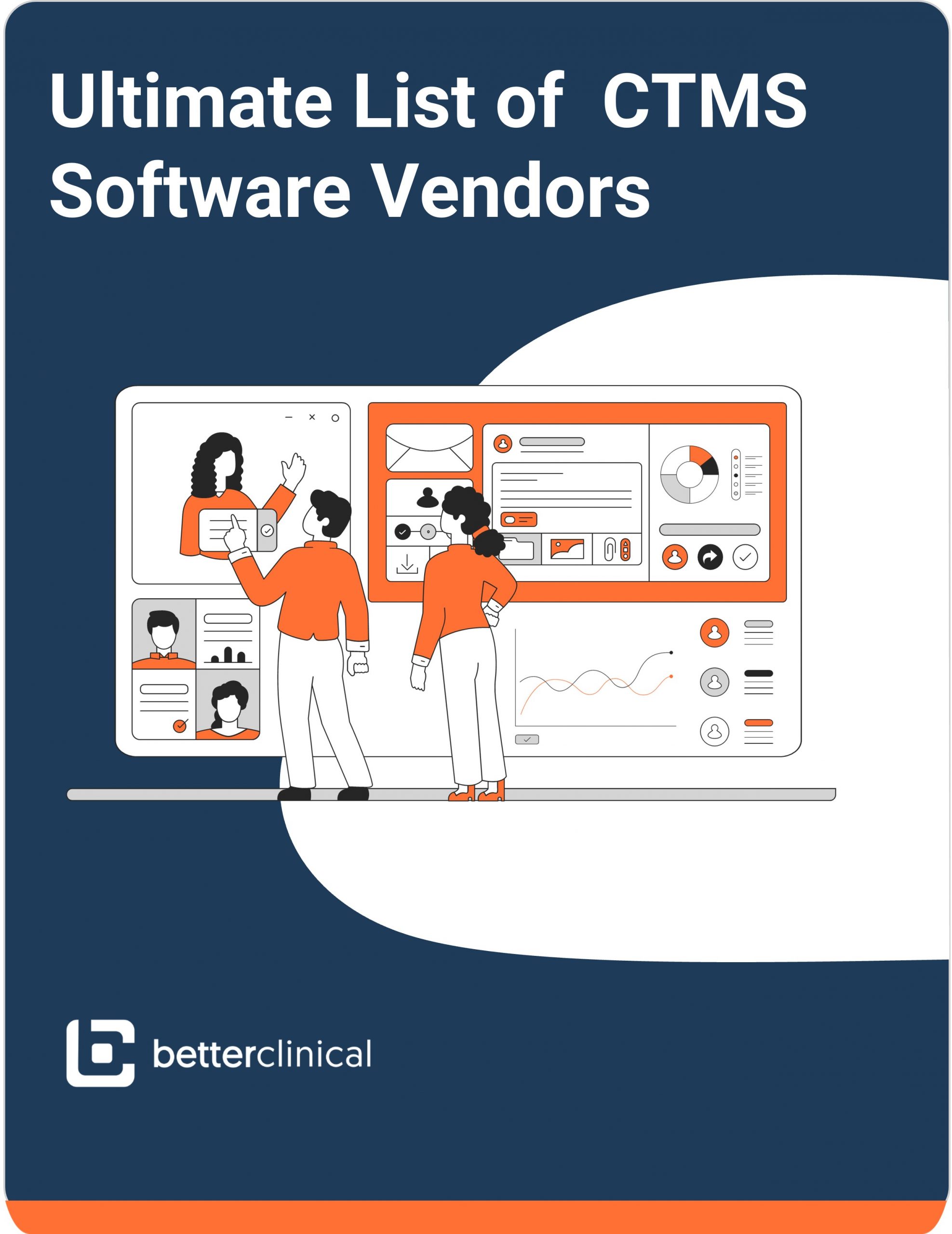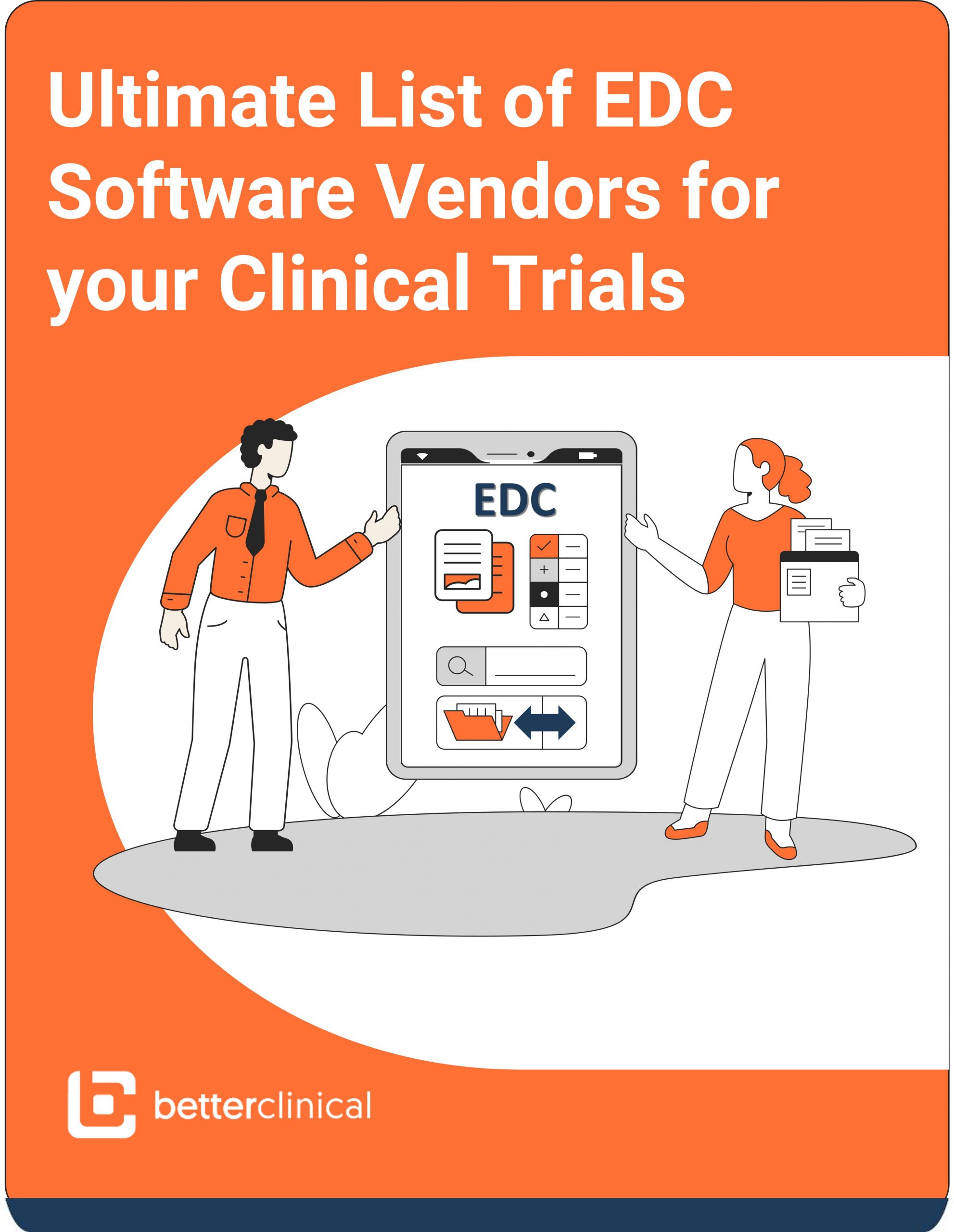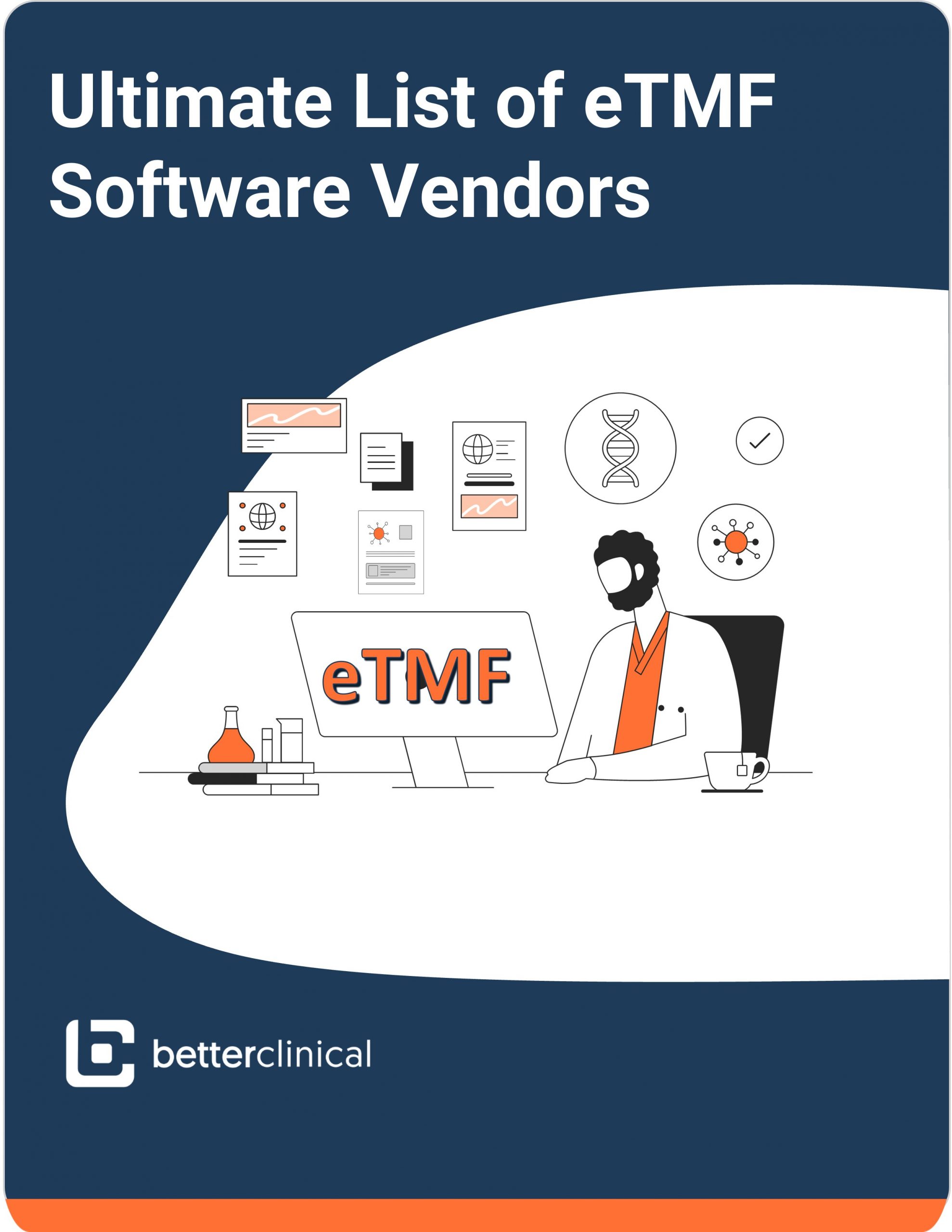Key Takeaways
TL;DR
AI is transforming clinical trials by addressing challenges in design, recruitment, safety, data quality, regulatory compliance, among other.
Key categories include:
- simulation and in silico modeling
- site and patient selection
- cohort discovery
- unstructured data analysis
- safety monitoring
- regulatory automation
Leading vendors gaining traction include Clario, Certara, ConcertAI, Inato, Clinithink, Nova In Silico, Phesi, Grove AI, AiCure, Medidata AI, Saama AI, Science4Tech, Deep6 AI, and Medeloop. While not exhaustive, this list provides a snapshot of some of the vendors shaping the future of AI in clinical research.
Table of Contents
Unlike typical “best of” lists, this guide provides an overview of some of the leading Ai companies being used in Clinical trials and hopefully is a starting point for sponsors and CROs as they go through their vendor selection process.
What is AI Software for Clinical Trials?
AI software for clinical trials refers to digital platforms that apply artificial intelligence and machine learning to different stages of the trial lifecycle. These tools analyze structured and unstructured data at scale, identify patterns, and automate decision-making processes that would otherwise be time-consuming or error-prone if handled manually. Unlike traditional software systems that only digitize workflows, AI actively “learns” from past and real-time data, providing predictive insights, reducing risk, and enabling more adaptive trial management.
Benefits of AI Software for Clinical Trials
Accelerated Recruitment & Enrollment: AI can pre-screen patients against trial eligibility criteria using EMR data, real-world evidence, and registries, helping to identify eligible participants faster and improve diversity.
Optimized Trial Design: Through simulation and in silico modeling, AI platforms test protocol variations and feasibility scenarios, reducing costly amendments and delays.
Improved Data Quality & Monitoring: Automated anomaly detection and risk-based monitoring tools help identify errors or irregularities early, ensuring data integrity and regulatory compliance.
Enhanced Safety Oversight: Pharmacovigilance platforms use AI to detect safety signals and adverse events in real time, strengthening patient safety monitoring.
Regulatory Efficiency: AI-assisted regulatory tools speed up submission preparation, ensuring consistency, version control, and alignment with evolving global standards.
Operational Cost Savings: By reducing manual tasks across trial design, recruitment, monitoring, and reporting, AI helps lower trial costs while improving accuracy and timelines.
In short, AI software equips sponsors, CROs, and academic centers with tools to run trials that are faster, smarter, more inclusive, and more reliable. This is an essential shift as clinical research grows in complexity and scale.
Ai Software in the Clinical Trial Sector
AI software in clinical trials is no longer an experimental concept; it is a proven enabler across multiple domains. Sponsors, CROs, and research institutions are now using AI to simulate entire protocols before the first patient is enrolled, to automatically screen and match patients across vast healthcare data, to detect anomalies in safety and endpoint data, and to streamline regulatory submission workflows. The result is not only greater efficiency, but also the potential for safer, more inclusive, and more cost-effective research.
Traditional clinical trial software systems have helped digitize trial operations, however, they often struggle with the growing data volume, hybrid trial formats, and demand for speed and diversity. This is where Artificial Intelligence (AI) software can be of great benefit.
Categories For Ai in Clinical Trials
Before exploring specific vendors, it is important to consider the functional categories where AI is being applied in clinical trials. Categories show whether a solution is best suited for protocol design, patient recruitment, safety, regulatory workflows, or other needs. Without a reference to categories, comparing vendors becomes misleading, since a recruitment-focused AI cannot be evaluated against an in silico modeling tool in the same way.
The following outlines some of the impactful AI categories in today’s trials, including some benefits and challenges to consider for each.
Simulation & In Silico Modeling: These are Ai Tools that create “virtual patients” or simulate entire trials, testing protocols before execution. These reduce risks, optimize designs, and shorten timelines. Benefits include scenario testing, feasibility insights, and resource savings; challenges include regulatory acceptance and ensuring models reflect clinical complexity.
Site Selection & Patient Pre-Screening: AI models prescreen patient data against eligibility criteria and evaluate site capabilities, improving enrollment speed and diversity. Risks include data availability and bias.
Cohort Discovery & Recruitment: Algorithms mine structured & unstructured data to match eligible patients. Benefits: faster recruitment, improved diversity; challenges: false positives/negatives, reliance on EHR quality.
Unstructured Data & Real-World Evidence (RWE): AI parses clinical narratives, pathology reports, and EHR notes, mapping concepts to ontologies for RWE generation. Benefits: deeper insights, broader data capture; challenges: data consistency and interpretability.
Risk & Safety Monitoring: Ai Tools for pharmacovigilance and centralized monitoring detect adverse event signals and anomalies in trial data. Benefits: patient protection, regulatory readiness; risks: false alarms, dependency on data quality.
Regulatory & Submission Automation: AI helps assemble submission dossiers, format outputs, and check compliance. Benefits: faster submissions, reduced human error; risks: evolving standards, validation overhead.
Data Quality, Monitoring & RBQM: AI supports risk-based quality management (RBQM) by analyzing trial data streams to flag risks and guide monitoring. Benefits: optimized resources; risks: dependence on analytics infrastructure.
Vendor Directory: Leading AI Software for Clinical Trials
The Ai software vendors we showcase below highlights those that are gaining traction in the clinical trials space. It is not intended to be an exhaustive list of Ai vendors in the clinical trial sector.
If you are aware of additional AI vendors making significant contributions to clinical trials, we encourage you to reach out so we can continue updating and expanding this list going forward.
The following list is not in any particular order.
Clario integrates AI across endpoint assessment, imaging, and data workflows. Its AI tools improve accuracy of endpoint analysis, reduce human error, and accelerate data review processes. Particularly valuable in decentralized and hybrid trials, Clario’s AI capabilities ensure consistent endpoint measurement across global sites. While robust in imaging and endpoints, its scope is narrower outside those domains.
Certara offers a scalable AI platform supporting both off-the-shelf and customized AI models. It integrates disparate trial and R&D data sources into a unified framework, enabling predictive analytics, faster submissions, and enhanced decision-making. Certara’s strength lies in interoperability and regulatory alignment, but its implementation may require significant integration support for organizations with fragmented systems.
ConcertAI specializes in oncology-focused AI, extracting critical patient variables (e.g., ECOG status, metastatic profiles) from EMRs and pathology reports. Its platforms are widely used in observational studies and real-world oncology data analysis. While powerful for oncology, its applicability to non-oncology areas may be limited.
Inato Ai Software is a global clinical trial platform that improves global trial enrollment by connecting sponsors with underutilized research sites. It provides patient prescreening, site performance evaluation, and diversity modeling. Inato has built a network of over 5,500 sites, addressing one of the largest barriers in trials: finding the right patients at the right sites. It AI-driven platform optimizes the following steps of the clinical trial journey:
Study design: gain real-world protocol insights from sites across the globe and confirm interest at scale
Site selection: leverage existing data and rich profiles across sites to understand patient access and inform final site and patient allocations
Patient enrollment: automate patient identification & chart review with AI to reduce burden and engage with patients at scale.
Developed over 15 years, Clinithink’s patented CLiX platform uses advanced Clinical NLP (CNLP) to process unstructured medical text, extracting clinical concepts for cohort discovery, RWE, and eligibility screening. It is especially strong at handling free-text data such as pathology notes. Proven in use cases like lung cancer risk prediction, it provides high granularity insights. Challenges include dependence on text quality and preprocessing overhead.
Phesi provides predictive modeling and analytics using one of the largest trial databases globally. Its AI forecasts enrollment rates, identifies feasible sites, and predicts trial outcomes. Sponsors gain insights to avoid common pitfalls and resource waste. Its reliance on historical data means forecasts may not fully capture novel trial designs or emerging therapies.
Grove AI focuses on participant engagement and relationship management, combining conversational AI with study-specific workflows. Its platform supports adherence, communication, and retention. While strong in engagement, it is less suited for technical areas like protocol simulation or regulatory support.
AiCure uses AI-driven computer vision and machine learning to monitor patient adherence and engagement. It captures dose-taking behavior through smartphones, ensuring protocol compliance. Widely validated, AiCure is strong in adherence monitoring but less applicable to broader trial operations.
Science4Tech applies AI to real-time performance monitoring, protocol optimization, and patient journey insights. Its strength lies in adaptive trial management and operational efficiency. A relatively newer player, its scale is smaller compared to global incumbents.
Saama provides AI-driven analytics with LLM-based capabilities, focusing on real-time trial oversight and regulatory compliance. Its Life Science Analytics Cloud (LSAC) integrates trial data streams for proactive risk management. Known for strong compliance features, Saama may require substantial training and onboarding for new teams.
Deep6 AI uses AI and NLP to mine EHR data and match patients to trials. Its platform accelerates feasibility and recruitment, particularly in academic centers. Proven in large-scale deployments, its performance depends on access to comprehensive EHR data sets.
Medeloop provides an end-to-end AI platform that integrates study design, operations, and participant engagement. Using AI agents, it automates EDC setup, adverse event tracking, and compliance monitoring. Investigators benefit from dashboards for real-time oversight, while patients use intuitive apps to stay engaged. As a newer entrant, its adoption is growing, and broader validation will strengthen its market credibility.
Nova’s jinkō platform simulates trials using virtual patients and disease models, enabling protocol testing before real-world execution. This reduces risks, optimizes trial feasibility, and speeds up decision-making. Particularly useful in rare diseases or early phase studies, limitations include regulatory acceptance and biological model complexity.
Summary
AI is rapidly becoming an indispensable layer across the entire clinical trial ecosystem. The vendors profiled here demonstrate how AI is applied in diverse ways: from patient simulations (Nova In Silico) that de-risk early protocol design, to site and patient selection platforms (Inato, Phesi, Deep6) that accelerate enrollment, to adherence monitoring tools (AiCure, Grove AI) that improve compliance, and regulatory and safety platforms (Certara, Saama, Science4Tech) that support oversight and submissions.
Taken together, these solutions reveal an important truth: there is no single “AI for clinical trials.”
Instead, there are AI categories, each solving specific bottlenecks in the lifecycle. The strategic question for sponsors and CROs is not “should we adopt AI?” but “which categories align most directly with our challenges?”
Future Of Clinical Research & Ai
The future of clinical research will likely blend these categories into integrated ecosystems. We can expect:
- Greater use of digital twins and in silico trials to reduce reliance on large, expensive human studies in early phases.
- Expansion of unstructured data mining (Clinithink, Deep6) to capture insights hidden in EMRs, pathology notes, and patient-reported outcomes.
- Smarter patient engagement platforms that predict attrition before it happens.
- Regulatory acceptance of AI-driven evidence, as authorities adapt to digital-first innovation.
Organizations that adopt AI thoughtfully through validating models, addressing ethical concerns, ensuring transparency, and integrating solutions into existing trial workflows, will be better positioned to shorten timelines, reduce costs, and improve patient outcomes. Those that delay may find themselves struggling to compete in an industry where AI is fast becoming not a competitive advantage, but a baseline expectation.

